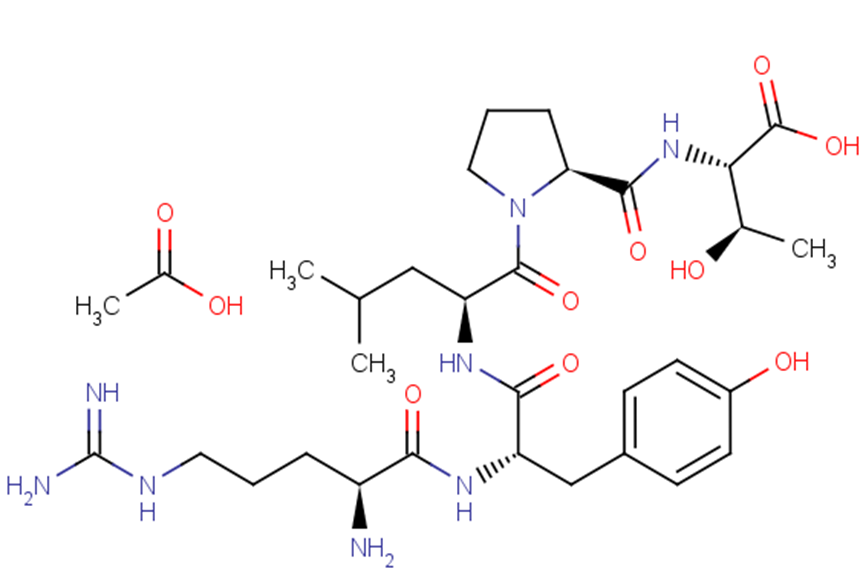
Proctolin
CAS No. 57966-42-4
Proctolin( —— )
Catalog No. M30566 CAS No. 57966-42-4
Proctolin is a bioactive neuropeptide that modulates interneuronal and neuromuscular synaptic transmission in a wide variety of arthropods.
Purity : >98% (HPLC)
 COA
COA
 Datasheet
Datasheet
 HNMR
HNMR
 HPLC
HPLC
 MSDS
MSDS
 Handing Instructions
Handing Instructions
| Size | Price / USD | Stock | Quantity |
| 2MG | 115 | In Stock |


|
| 5MG | 195 | In Stock |


|
| 10MG | 312 | In Stock |


|
| 25MG | 438 | In Stock |


|
| 50MG | 627 | In Stock |


|
| 100MG | 870 | In Stock |


|
| 200MG | Get Quote | In Stock |


|
| 500MG | Get Quote | In Stock |


|
Biological Information
-
Product NameProctolin
-
NoteResearch use only, not for human use.
-
Brief DescriptionProctolin is a bioactive neuropeptide that modulates interneuronal and neuromuscular synaptic transmission in a wide variety of arthropods.
-
DescriptionProctolin is a bioactive neuropeptide that modulates interneuronal and neuromuscular synaptic transmission in a wide variety of arthropods.
-
In Vitro——
-
In Vivo——
-
Synonyms——
-
PathwayOthers
-
TargetOther Targets
-
Recptor——
-
Research Area——
-
Indication——
Chemical Information
-
CAS Number57966-42-4
-
Formula Weight648.75
-
Molecular FormulaC30H48N8O8
-
Purity>98% (HPLC)
-
SolubilityIn Vitro:?H2O : 100 mg/mL (154.14 mM)
-
SMILES——
-
Chemical Name——
Shipping & Storage Information
-
Storage(-20℃)
-
ShippingWith Ice Pack
-
Stability≥ 2 years
Reference
molnova catalog



related products
-
SPHINX
SPHINX is a new generation inhibitor of SPRK1.
-
Elgonica dimer A
Elgonica dimer A.
-
BAY-179
BAY-179 is a potent, selective, and species cross-reactive complex I inhibitor used for cancer research.



 Cart
Cart
 sales@molnova.com
sales@molnova.com


